You’ve Come a Long Way, Baby: 2014 Update
Posted: April 13, 2014 Filed under: Ben Simpson, Cinema, David Campion, Film Ache, Ian Fielding, Uncategorized | Tags: Blue is the Warmest Colour, Dead Unicorns, Film, Harold and Maude, Rome Open City, The Great Beauty, Under the Skin, Woodfalls Leave a commentRecently we’ve been lucky enough to be spending more time making films than writing about them. Dave has made Woodfalls, Ben is a professional filmographer and I’m currently mid-way through shooting my next feature film Dead Unicorns
http://deadunicornsfilm.wordpress.com
Our original plan was to offer film reviews from a fresh perspective. Discover a different angle about a film that would shed light on its mystery rather than simply serve up a straight good or bad review with a description of the plot. The blog has proved to be very successful, we are nearing 35 thousand views and are very grateful to all of you for sharing your time with us.
You may well see more reviews here in the future as we take a breather between projects – but for now I’d like to mention a handful of films I’ve seen recently that have really struck a chord.
The first is Paolo Sorrentino’s The Great Beauty. Sincere film making about a rotten Rome and a man looking for a revelation.
Jonathan Glazer’s Under the Skin is an astonishing phantasm with creeping fingers.
Blue is the Warmest Colour confronts the walloping emotions of love with immense snotty-nosed force.
From the vaults are Rossellini’s Rome, Open City. Currently on big screen re-release. He makes you fall in love with three characters and systematically kills them off. Simple, funny, moving, powerful.
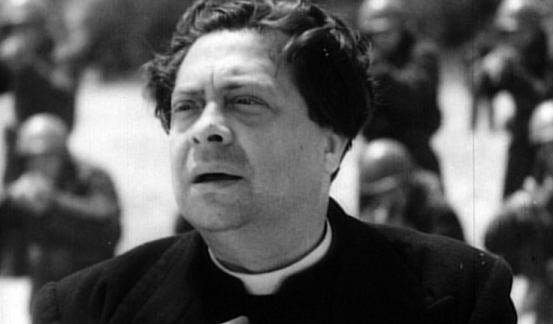
Hal Ashby’s Harold and Maude is kooky and irresistible… with a shockingly powerful stab of emotion in an understated moment on a beach.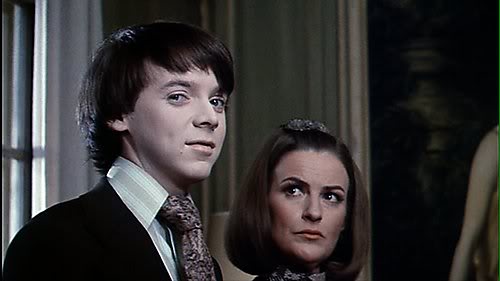
Look forward to seeing you in the future.
My name’s Ian. I’m a writer and Filmmaker from London currently shooting my second feature film – a detective thriller called Dead Unicorns
To see pics, a trailer and what’s currently happening with Dead Unicorns click here:
http://deadunicornsfilm.wordpress.com
2011 in review
Posted: January 1, 2012 Filed under: Uncategorized Leave a commentThe WordPress.com stats helper monkeys prepared a 2011 annual report for this blog.
Here’s an excerpt:
The concert hall at the Syndey Opera House holds 2,700 people. This blog was viewed about 13,000 times in 2011. If it were a concert at Sydney Opera House, it would take about 5 sold-out performances for that many people to see it.
Click here to see the complete report.
Female Orgasms and Ghost Monkeys: Ian Fielding on Uncle Boonmee Who Can Recall his Past Lives
Posted: May 6, 2011 Filed under: Cinema, Film Ache, Ian Fielding, Uncategorized | Tags: Apichatpong Weerasethakul, David Lynch, Ingmar Bergman, John Hughes, Martin Scorsese, Tarkovski, Uncle Boonmee, William Faulkner Leave a commentMany of the curious effects in the dream-world of the movingly poetic UBWCRHPL derive from Thai filmmaker, Apichatpong Weerasethakul’s intent to depict the inner state of his hero, Uncle Boonmee.
Uncle Boonmee is having it rough, he’s terminally ill with a liver complaint, undergoing peritoneal dialysis, and taking metaphysical and spiritual stock of his life as he drifts internally to embrace his final memories. His deathbed pilgrimage unfolds in surreal overlaps of biographical thought – the past lives of the title. These adventures include encounters with ghost monkeys (perhaps representing those killed in the war against communism, and Boonmee’s guilt in the part he played) and dead family members. We also have insights into his previous incarnations as a water buffalo and a catfish – and inner city vignettes situated in a bar, a prayer room and a sparse hotel dormitory. The intimation is that Boonmee’s odyssey is a consoling journey that leads him into a vast tranquillity and a cosmic peace with his own existence.
Many films find their form through the subjective state of their heroes. The bleak and violent jazz of Travis Bickle’s world, or the slow motion, sportsman-like time dilation of Raging Bull’s Jake La Motta, or the off-kilter and fractured editing of Shutter Island’s Teddy Daniels, to enlist a roll call of Scorsese reprobates. In these films the nature of the hero determines the tone and character of the on-screen action.
So what of Boonmee? Like in other dream-like films, for example Mulholland Drive, Mirror and Last Year in Marienbad – it is as if the protagonists (and therefore the film itself) are operating in a kind of theta-wave frame of thought. Theta-wave? As we engage in different activities, the wavelengths of our mental function change to suit what we are doing. These are separate, clear and distinct states, like gears in a car. In alpha state the human mind is at repose, perhaps in meditation, strolling through a garden, or resting after a hard task. The beta state is sharp, one of alert concentration, the state of a politician fielding debate on Question Time or a stand up comedian mid-routine. Theta state is much closer to the dream zone, it is often the state in which artists and business-folk discover their winning ideas. A person who is driving and finds they can’t recall the last five miles is in Theta state. To recognise and control these states within ourselves is to begin to engage in powerful levels of self-control.
In its beguiling and mysterious attitude towards an anthology of moments circulating a theme – Boonmee’s most appropriate neighbour may be David Lynch’s Inland Empire. Events unfold without the audience being given explicit guidance. It is this unpatronising approach that ensures that the film reverberates with a multitude of meanings personal to each spectator.
Boonmee’s objective is perhaps best summed by this letter sent by a woman from Gorky to the director Tarkovsky after the release of Mirror, he had been inundated with letters of cool indifference and heated vehemence on the supposed impenetrability of his film. ‘Thank you for Mirror… my childhood was like that… only how did you know about it… there was that wind and the thunderstorm… and how beautifully the film shows the awakening of a child’s consciousness, of his thought… And lord, how true… I felt for the first time in my life that I was not alone.’ And another letter from a teacher ‘The film is compassionate, honest, relevant… and everyone who spoke said, ‘The film is about me.’
Cinematically, Boonmee’s heartbeats could be traced back to the death-bed ruminations of Bergman’s The Silence or his Cries and Whispers. A more obvious literary precedent is the William Faulkner novel As I Lay Dying. The self-explanatory great American experimental novel that contains a five word chapter that states simply ‘My mother is a fish.’ Uncle Boonmee itself is no stranger to unusual flourishes. In one of the most incredible sex scenes ever committed to film a palanquin borne princess wades into a waterfall pool to have sex with a catfish.
This is a tasetful and elegant handling that rates up there with Henry and the girl next door submerging themselves into Henry’s bed in Eraserhead or the magnificent Naomi Watts ‘angst wank’ in Mullholland Drive, though all these are mere localised clitoral orgasms in comparison to the almighty body-shaking vaginal orgasm that is on display in Weird Science. I always like to think that the scene in Weird Science seems to cunningly represent the female and the male orgasm simultaneously. In the John Hughes film a party goer’s evening is interrupted when ‘weird science’ erupts through the house and a suction vacuum forcefully removes her garments and sucks her up a phallic chimney only to ejaculate her from its top – sending her flying into a nearby lake, legs kicking. It’s the kind of risqué visual pun that fits that type of cinema like a glove.
Meanwhile, there is no doubt that Boonmee is a wonder, a majestical film that relates to a simple life in a balmy corner of the world, a life tangled up in the horrors of conflict but not defined by them. There are voices of descent, but if you try on the emperor’s new clothes, you may find that they fit you.
Other Articles by Ian Fielding
My name’s Ian. I’m a writer and Filmmaker from London currently shooting my second feature film – a detective thriller called Dead Unicorns
To see pics, a trailer and what’s currently happening with Dead Unicorns click here:
http://deadunicornsfilm.wordpress.com
Frightfest Special: Ian Fielding on Rubber
Posted: March 29, 2011 Filed under: Cinema, Film Ache, Ian Fielding, Uncategorized | Tags: Ian Fielding, Mr. Oizo, no reason, Quentin Dupieux, review, Rubber Leave a commentDirected by Quentin Dupieux (aka French electro house musician Mr. Oizo) Rubber would make an effective concept for a music video. A car tyre arises from the desert and embarks on a killing spree across a dusty America town. The tyre dispatches its victims by deploying psychokenetic powers, usually to explode its victim’s heads. These proceedings are observed through binoculars by a crowd of spectators based on a nearby hilltop.
Rubber’s self-referential, ironic and minimalist execution edges it into art house territory. This is a film of ideas, concerned with making the silly, lofty and the lofty, silly. In a pleasing opening sequence a police officer spells out to the audience the central theoretical premise of the of the film – that ultimately things can occur for no reason. ‘In Stephen Spielberg’s ET why is the alien brown? No Reason.’ This hints at a kind of exploration of randomness, whereas the film is more concerned with a playfulness concerning the nature of reality and storytelling.
As this is ultimately a film about ideas, expect to be quirkily amused rather than emotionally enraptured. It skirts around the outside rather than delving deeply into those big ideas. It doesn’t utilise the toolkit of drama to pull out any astonishing turns and so despite its aesthetic purity and playful heart, the film comes over as a little shallow, a little distant and lacking in true dramatic impact. There are hints of potential here though. I can’t help thinking that with a dash more deviousness or a stronger serving of soul that Mr Dupieux could develop into a serious cinematic pull.
My name’s Ian. I’m a writer and Filmmaker from London currently shooting my second feature film – a detective thriller called Dead Unicorns
To see pics, a trailer and what’s currently happening with Dead Unicorns click here:
http://deadunicornsfilm.wordpress.com
FrightFest Special: Ben Simpson on Hobo with a Shotgun
Posted: March 7, 2011 Filed under: Ben Simpson, Cinema, Film Ache, Uncategorized | Tags: Ben Simpson, Hobo with a Shotgun, Rutger Hauer Leave a commentHobo (Rutger Hauer) has one dream in life, to buy a lawnmower and start up a new business. Unfortunately for him he’s homeless and lives in Scum Town. Riddled with every type of low life degenerate under the sun it isn’t exactly the ideal place to become a Gardner and when some masked men hold up a cashier at the ‘Pawn till Dawn’ Hobo has no choice but to part with his last $50, buy a shotgun and blast them all to hell. With a taste of justice Hobo’s hungry for more and starts cleaning the streets to the dismay of The Drake (Brian Downey) and his forever disenchanted sons who put a bounty on the Hobo’s head.
This is most akin to the cult films of the 80’s such as Street Trash on route through Tromaville without the hyper juvenile jokes that detract me away. The problem I have with Troma films are the characters are set to 11, they all have ADD constantly screaming at one another in hyper situations but there’s nothing going on around them. In Hobo with a Shotgun everything is turned to 11; environment, editing and the acting all working together to create a balance that never slows down until the end credits. The blood never stops flowing and there’s enough imaginative deaths to whet the appetite of the most hardcore gore fan. My favourite being ‘The Glory Hole’.
Seeing Rutger Hauer shooting the shit out of people, breaking down doors, eating broken glass bottles and a whole lot more is a sight to see in itself and at 67 he hasn’t lost his enthusiasm for the bizarre and trashy. He could very well be depicted as a Super Hero, the film has a comic book element to it, characters are black and white and Hobo even gets his own side-kick to fight crime with. A stunning looking prostitute (played by Molly Dunsworth) who together talk about the beauty of grizzly bears when they’re taking a rest from decapitating evil.
Watching Hobo with a Shotgun at Fright Fest was the closest I’ll ever get to the days of the midnight screenings on 42nd Street and I loved every minute of it. DIY effects, over the top lighting, great one liners and a montage that’s somewhere between Evil Dead 2 and Footloose. It’s what Grindhouse should have been and wanted to be. The Director (Jason Eisener) didn’t imitate a cult classic, he made one. In the Introduction Jason said, “We made this film without any rules, so you, the audience, should have no rules watching it. I like watching it without pants on.” and proceeded to take his pants off. That summed up the whole film in one action. Balls out horror.
Ben Simpson is the Co – Director of Patrol Men
Follow FilmAche on Twitter
FrightFest Special: David Campion on I Saw the Devil
Posted: March 7, 2011 Filed under: Cinema, David Campion, Film Ache, Uncategorized | Tags: Choi Min-sic, David Campion, I saw the Devil, Jee-woon Kim, Korean Film Leave a commentThe Glasgow Film Festival has been invaded by Frightfest – could you ever imagine the London Film Festival including a genre segment in their bill? No, me neither. High props to Glasgow for opening their doors and hearts to the hordes of drooling horror fans, many of whom have travelled not only from England, but Germany and even Australia [somebody must have really wanted to see Little Deaths].
So, first for me is the latest Korean export, I Saw the Devil. Having already screened across the Atlantic, most notably Toronto and Sundance, the film has already earned a lot of buzz from critics and genre fans alike. Despite my high expectations, Kim Ji-Woon managed to surprise me with a whole new level of filmmaking. ISTD combines the clinical attention to detail as seen in Zodiac, the fierce psychological examination of a serial killer as seen in Silence of the Lambs, but injects it with a hyper kinetic quality, not unlike Christopher Nolan at his finest.
Thematically, the film is strong, playing with the concept of revenge and repetition; raising the question of when does revenge become unfulfilling? Kyung-Chul [Choi Min-sik] is a depraved serial killer, with no sense of morality or empathy; in real life this man deserves to be punished, in filmic terms, he deserves to die. However, for our ‘hero’, Soo-Hyun [Lee Byung-hun], death is not enough. Instead, he plants a tracking device into the killer and proceeds to beat him within an inch of his life, before letting him go and repeating the process.
I Saw the Devil not only boasts an engaging script, fine performances, pitch-perfect direction and high drama, but it also delivers on a primal splatter level as well. The deaths are messy and disturbing. There is a moment when Kyung-Chul shares a car ride with two shifty gentlemen. There is an air of Hitchcockian tension, especially as each man looks as dangerous as the other. This tension is broken when Kyung-Chul unleashes his rage, repeatedly stabbing the driver and his accomplice. In all my years of watching horror films, I have never witnessed such fury with a knife.
Much like Oldboy, ISTD has a westernized flavor. Aesthetically, both films evoke the spirit of David Fincher, whilst ISTD also takes a direct cue from No for Country Old Men. In the way Tarantino is happy to pinch bits from European cinema and make it his own, the film wears it influences on its sleeve, confident enough in its own originality. Kim Ji-Woon is friends with Park Chan-Wook [Oldboy, Sympathy for Lady Vengeance, Thirst] and Bong Joon-ho [The Host, Mother] and collectively, the trio represent an exciting new wave in Korean filmmaking. All three directors have a knack for taking typical ‘genre’ cinema and elevating it way beyond the norm. This has to do with their impeccable technique and understanding of cinema. Personally, I’m keeping my eyes on these filmmakers, as I am expecting even greater films to come.
David Campion is the Co – Director of Patrol Men
Follow FilmAche on Twitter
FrightFest Special: Ben Simpson on Little Deaths
Posted: March 7, 2011 Filed under: Ben Simpson, Cinema, Film Ache, Uncategorized | Tags: Ben Simpson, Little Deaths Leave a commentEvery year an English film plays FrightFest and the vast majority are a waste of time. So bad you fear your eyeballs will develop cancer (Dead Cert, Isle of Dogs and 13hrs just to name last year’s crop) and this doesn’t disappoint. Little Deaths is an Anthology piece with three stories that relate to the darker side of sex and death. The first major problem is that only one of these three directors can direct.
First up is House and Home, Sean Hogan’s (writer of Isle of Dogs) feeble attempt. A homeless girl is enticed into a couples’ home. She is bathed and fed and then at the dinner table, the couple poison her wine. The tramp wakes up tied to a bed and the sexual torment begins. The direction and narrative is so painfully dull and lazy that even a cum shot to the face and a golden shower fails to spark any repulsion or anger. Just when you think it can’t get any worse the twist comes a long. At least it can’t get any worse…
Andrew Parkinson’s Mutant Tool wasn’t much better, it manages to make a film about a caged Nazi monster with a huge cock that dribbles out semen into a bucket boring. Instead of focusing on this cum beast we get laborious scenes of what the scientists use the semen for. Hardly getting a peek at the monster feels like such a huge waste of effects. Plus you forget the story almost immediately after it finishes. Andrew Parkinson might as well of filmed the monster masturbating for 20 minutes.
Bitch is a breath of fresh air. Just by the first shot you can tell the director (Simon Rumley) is leagues above the two directors that play before him. A dark tale about domination and fear, Simon gets some powerful performances out of the actors while being both subtle in his storytelling and successful in creating a living environment for them to populate. Bitch has a completely different look to the DV-like quality of the first two films. It is raw and life-like and brings a dark, uncomfortable and cold tone to the film. Ultimately though it’s too late, after the atrocious segments before it nothing could save this car wreck of a film, which is a shame because Simon Rumley’s Red, White and Blue was one of my favorites of 2010. If it wasn’t for the third segment this would have played like a 1st year film students project. Go and watch Trick R’ Treat instead or if you really want to see a new-ish English anthology film go with Cradle of Fear. It’s not that good, but I’d watch it over Little Deaths anytime.
Ben Simpson is the Co – Director of Patrol Men
Follow FilmAche on Twitter
Ian Fielding on True Grit: Bravery on Tap
Posted: March 7, 2011 Filed under: Cinema, Film Ache, Ian Fielding, Uncategorized | Tags: Coen Brothers, Dino De Laurentiis, Hailee Steinfeld, Jeff Bridges, Josh Brolin, Matt Damon, True Grit Leave a commentDino De Laurentiis, the late, great producer of Blue Velvet once said that to be a man you need three things. Heart, brains and balls. In looking at the Coen brother’s new film True Grit, I’ll be focusing on balls.
True Grit. The background is spiritual pollution, the bloodthirsty acquisition of the west. The book is Charles Portis’ classic take on the western novel. The characters are the tough and weather-bruised products of their environment. They meet death with equanimity, resort to brutality with laissez-faire matter-of-factness and treat each other as straw dogs, with little more than money, justice and the need to survive binding them together.
The film contains stirring feats of heroism, which serve as the flags to the measure of its character’s constitutions.
Mattie Ross (Hailee Steinfeld), the astonishing 14 year old Presbyterian with a smart mouth and steady nerve is a monster of progress and logic who is driven by a powerfully centered emotional force – the need to exact retribution upon the man who killed her father.
The moment when Mattie frees herself from the keeper of the river ferry and crosses the water on a swimming horse amazes and charms us with her spontaneous resourcefulness. Bravery is not trait-like, it only emerges in special circumstances like this.

J. ‘Rooster’ Cogburn (Jeff Bridges), cranky, robust and raw, is a true veteran of the plains, corrupt, forgetful and above the law. There’s a sense of old school masculinity in the way he lets his soul play out, it’s like Johnny Cash’s voice, timeless and forged in the fire of primal humanity, as fixed as the North Star and attached profoundly to the earth. This is not a man of wit and stealth but a man of straight talking simplicity, clear means and closely guarded pride.
Cogburn turns on the physical courage when he rides fearlessly into a gang of four outlaws, facing them head-on, reins in mouth and two pistols blazing, facing the fray in confidence. Though elsewhere (especially in Mattie’s eyes) he is shadowed by vice.
Psychological bravery means acting against our natural inclinations and facing fears which may not have any social implications. This includes overcoming personal addicting habits, irrational anxieties and harmful dependent relationships. So as Cogburn turns to drink, he looses his bottle and the film throws its own quiet anti-drinking campaign. Mattie loses her faith in him (not in the least because it is a reminder of the circumstances surrounding her father’s death) and Cogburn looses face as he rides onward drunkenly through the day boasting and singing to himself.
Moral Courage is the ability to act rightly in the face of popular opposition, shame, scandal, or discouragement. The prime cinematic example is James Cagney in Angels with Dirty Faces. Who on his death bed, his appointment with the electric hair, acts like a cowardly, sniveling wretch before all the criminal kids who idolise him so that they don’t follow in his footsteps, completely annihilating his reputation in a swoop.
Cagney’s display is the polar opposite to Nietzsche’s vanity bravery: ‘One never dives into the water to save a drowning man more eagerly than when there are others present who dare not take the risk.’ For me, Cagney’s is the greatest act of sacrifice in cinema.
So what is true grit? Is it not a kind of bravery on tap? Pure internal focus and resolve. Like the characters in this film who have it embedded into their bones. A necessary state to get by in a tough universe. A thought that makes Mattie an even more formidable character considering it takes time to build such resolve.
Cowards die many times before their deaths;
The valiant never taste of death but once.
Julius Caesar (II, ii, 32-37)
You will be hard pressed to find a film that doesn’t contain a moment of bravery, ranging from the foolhardy to the heroic. Bravery is the key catalyst to progress in life and so it is with film.
My name’s Ian. I’m a writer and Filmmaker from London currently shooting my second feature film – a detective thriller called Dead Unicorns
To see pics, a trailer and what’s currently happening with Dead Unicorns click here:
http://deadunicornsfilm.wordpress.com
David Campion on The Fighter: Raging O Russell
Posted: February 19, 2011 Filed under: Cinema, David Campion, Film Ache, Uncategorized | Tags: Amy Adams, Christian Bale, David Campion, David O Russell, Film Ache, Mark Wahlberg, The Fighter Leave a commentIt all started on Three Kings. Supposed battles with crew, scrapes with extras, and a blow up with everyone’s favourite liberal, George Clooney; say what you will about David O Russell, but the guy has heart. Speaking of heart, it was his next project, existential comedy I Heart Huckabees, which really sparked debate, when a video leaked of him kicking off at veteran actress, Lilly Tomlin. Both artist’s are obviously having a bad day, Tomlin herself is irritable and stressed, but after remaining silent for some time, O Russell lets spew a volcanic diatribe, resulting in pure YouTube gold.
These heated confrontations seem to be sparked by what makes O Russell special. He works in a loose, semi-improvised manner, giving his work a sense of urgency and spontaneity. However, there seems to be a communication failure somewhere between the great man and his accomplices, and this is his downfall. It’s no mystery why it’s taken six years for his next film, The Fighter, to be released.
Now in his fifties, it would appear the director has calmed down and possibly developed a new work ethic. The evidence of this new ethic is apparent in The Fighter, which is a lean, perfectly staged, exquisitely acted and directed piece of cinema. With a modest budget [somewhere around the $35 million mark], an ensemble cast [including a scenery chewing Christian Bale] and a very tight schedule [33 days]; The Fighter looks and feels like an effortless film.
Taking a very typical, cliché ridden underdog story and trying to inject it with a sense of vitality and importance is no mean feat. In fact, the boxing genre is one of the hardest to excel in, being overshadowed by both the archetypal underdog story, Rocky and the artful triumph, Raging Bull. These factors, along with long history of the film [four writers, two directors, endless star changes], should point towards cinematic disaster, so why does The Fighter work???
The Fighter is very much an examination, not only of character ambitions and family dynamics, but societal demands. First, the location. Lowell, Massachusetts is the perfect urban setting to raise a fighter, as it proves “livin’ ain’t easy”. The residents of this predominately working class community are vocal in their thoughts and opinions about the characters, giving Micky Ward [Mark Wahlberg] the ‘underdog complex’. He’s passive, which for a boxer, is a pretty useless quality. Now let’s examine the family. Mother Alice Ward has not only produced two fighters, but seven ‘monstrous’ sisters. Seemingly growing up in a grim fairytale, Micky has to deal not only with a firecracker mother, but a former glory, now-turned-addict brother, who still manages to soak up all of the family’s admiration. This lack of love and nurture has obviously had a negative effect on Micky’s confidence, which could be a direct reason for his ‘stepping-stone’ reputation in the ring.
Dicky Ward [Christian Bale] is like a vacuum, demanding all of the attention from almost every character in the film. Interestingly, outside the realms of the film, Christian Bale is doing the same, receiving award nominations across the board and being the cast/crew member most likely to pick up an Oscar. I like to think his performance is in retaliation to The Dark Knight, where Heath Ledger picked up all of the accolades for his supporting turn as The Joker, while Bale had to play it straight. Now in the ‘joker’ role, Bale relishes every moment he is on screen, perfectly playing a waster way beyond his prime.
Amongst all this chaos, O Russell keeps a tight handle over the script, never deviating away from the all important structure. However, unlike more ‘mainstream’ affairs, The Fighter has a sense of truth. The supporting characters aren’t mere obstacle blocks, but living, breathing people. Occasionally flawed, but always likeable, each actor takes the character to a place of familiarity, enabling the audience to not only identify with them, but to emphasise with them as well.
Stylistically, O Russell has always had plenty of tricks up his sleeve. He moves the camera with pace, never restricting the moving shots to dollies, but employing vehicles to give them speed and excitement. However, his genius comes within the ring. Rather than competing with the untouchable Raging Bull, O Russell chooses to shoot the fight scenes using ‘video footage’. He captures the brutality within the ring, but from a perspective everybody is familiar with. Even when it comes to using slow motion he doesn’t sell out by using 35mm for a smooth finish, but allowing the jerkiness of the ‘HBO’ style to shine through. The direction in the film is non fussy and kinetic.
Whatever your opinions are of David O Russell, past or present, you really can’t question his integrity. As a successor of the ‘Sundance Kids’ stable, O Russell has established himself as an auteur. Much like Aronofsky [the once director of The Fighter, now billed as executive producer], O Russell’s next project is distinctly ‘Hollywood’. He is in talks to direct a feature based on the popular video game, Uncharted. So, in two-three years time, will two of the better ‘indie’ artists be battling it out for summer box office? Personally, I’m looking forward to Oscar race between Brett Ratner and Michael Bay.
David Campion is the Co – Director of Patrol Men
Follow FilmAche on Twitter
Ian Fielding: Black Swan Revisited, Mum’s the Word
Posted: February 12, 2011 Filed under: Cinema, Film Ache, Ian Fielding, Uncategorized | Tags: Black Swan, Ian Fielding, Meaning, Natalie Portman 5 CommentsSince I wrote my original review of Black Swan, which you can find through the link below, I’ve developed and modified my position on the film’s secrets and meaning, and I’d like in this article to expand on my reading of the film’s dark subtext. As I stated in my original review, implanting difficult themes below the story surface is fairly standard screenwriting practice within certain genre films.
A quick recap: the film is ostensibly about a delicate, naive and innocent but highly talented ballet dancer who must access an edgier, more domineering and sexual part of her persona in order to successfully embody the role that she has won, that of the black swan, in Tchaikovsky’s Swan Lake.
We know Nina is already something on the edge but this challenge precipitates an incredible transformation that initiates delusions, terrifying hallucinations, self harm and eventually leads her to end her life.
So why? Why does the adoption of this role generate such a terrifying psychological upheaval within Nina?
For this role Nina is explicitly requested to interrogate her sexual character, a domain she has repressed from herself for a reason – namely that she is suffering from past and possibly continuing sexual and emotional abuse at the hands of her overbearing mother. It is as if the friction of simultaneous belief and denial about what has happened gives rise to these harrowing episodes.
Where is the evidence? Actually throughout the film it is continually dispersed. Firstly, Nina’s character, before her psychological meltdown, displays characteristics of an individual who has been abused, she is isolated, reserved, seems to find it hard to communicate with her fellow dancers, has possible trust issues, assertion issues, self-esteem issues.
Also look at the excessive infantilisation that she is subjected to, the childish bedroom with the stuffed toys, being dressed and undressed by mother. No lock on the door. When her friend Lily shows up at the door she is turned away by Erica, her mother. Infantilisation is a common practice deployed by abusers to forestall the sexual development of their victims.
When the dance choreographer Thomas kisses Nina she responds by biting his lip and then running away, is this deeply unusual act not the symptomatic behavior of the kind of person who has had to learn to defend themselves sexually?
Importantly the parallels between Lilly and Erica are continually made. Could it be that when Nina sees Lily she sees a safe or legitimate outlet for the sexual feelings that have been implanted in her by her mother?
Further hints arrive when Nina attempts to masturbate. Once on her bed and a second time in the bath. In the bedroom, Nina turns during the act to witness the presence of Erica asleep in her room, the presence is physically nonthreatening but deeply unnerving. In the bath the image has become a potential danger, it stares straight into Nina’s eyes, looking like some demonic mixture of Lily, Nina and Erica, as if the lines between these three characters has become blurred. Monstrously, Erica has invaded Nina’s fantasy space.
The key event in Nina’s sex life during the film is the night of her drugged drunken debauches, when she apparently takes Lily back to her apartment after having fucked (as she puts it), two boys in the nightclub. The mother appears, in exactly the same way as Lily appears to Nina in an earlier scene at the dance studio. Erica proceeds to fiercely admonish Nina as if no one else where there, uttering the telling phrase ‘Shut your mouth’ Now Nina runs to her bedroom and sleeps with a woman, and we know that Lily emphatically denies having been there. So who was with Nina? The person who was there clearly utters the phrase, ‘my sweet girl’ before holding a cushion over Nina’s head. This is Erica’s trademark phrase. This is only really the beginning of this series of disturbing clues. There are, echoing through the film, many more reverberations on this theme.
A very common reaction is to brush aside the logic of the picture by diagnosing Nina with schizophrenia and leaving it at that, without considering the origin of our hero’s disturbance. Sadly, and I think in this case, a little uncannily, this pattern all too often repeats itself outside of the cinema, in the real world.
Further evidence of the importance of cinema in mobilising public debate.
Read my original article HERE
My name’s Ian. I’m a writer and Filmmaker from London currently shooting my second feature film – a detective thriller called Dead Unicorns
To see pics, a trailer and what’s currently happening with Dead Unicorns click here:
http://deadunicornsfilm.wordpress.com
Follow FilmAche on Twitter

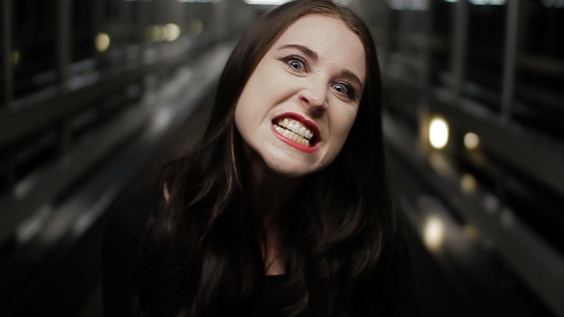
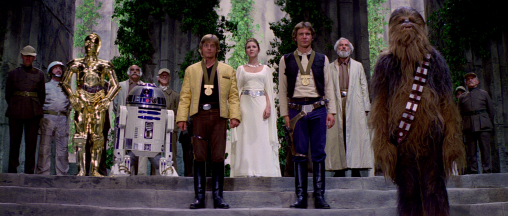

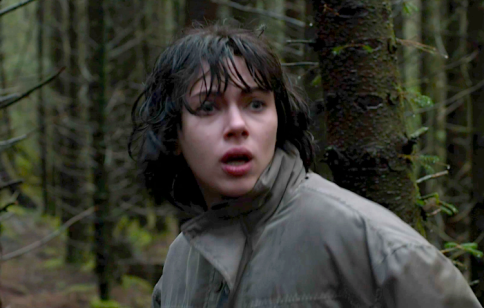
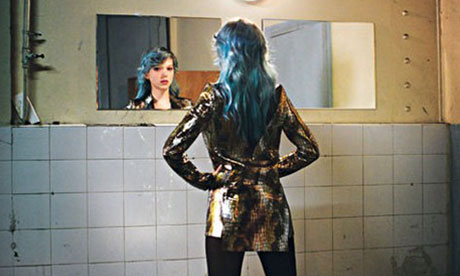






































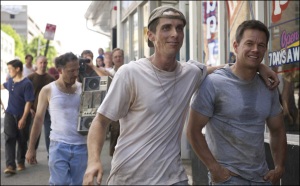










Recent Comments